

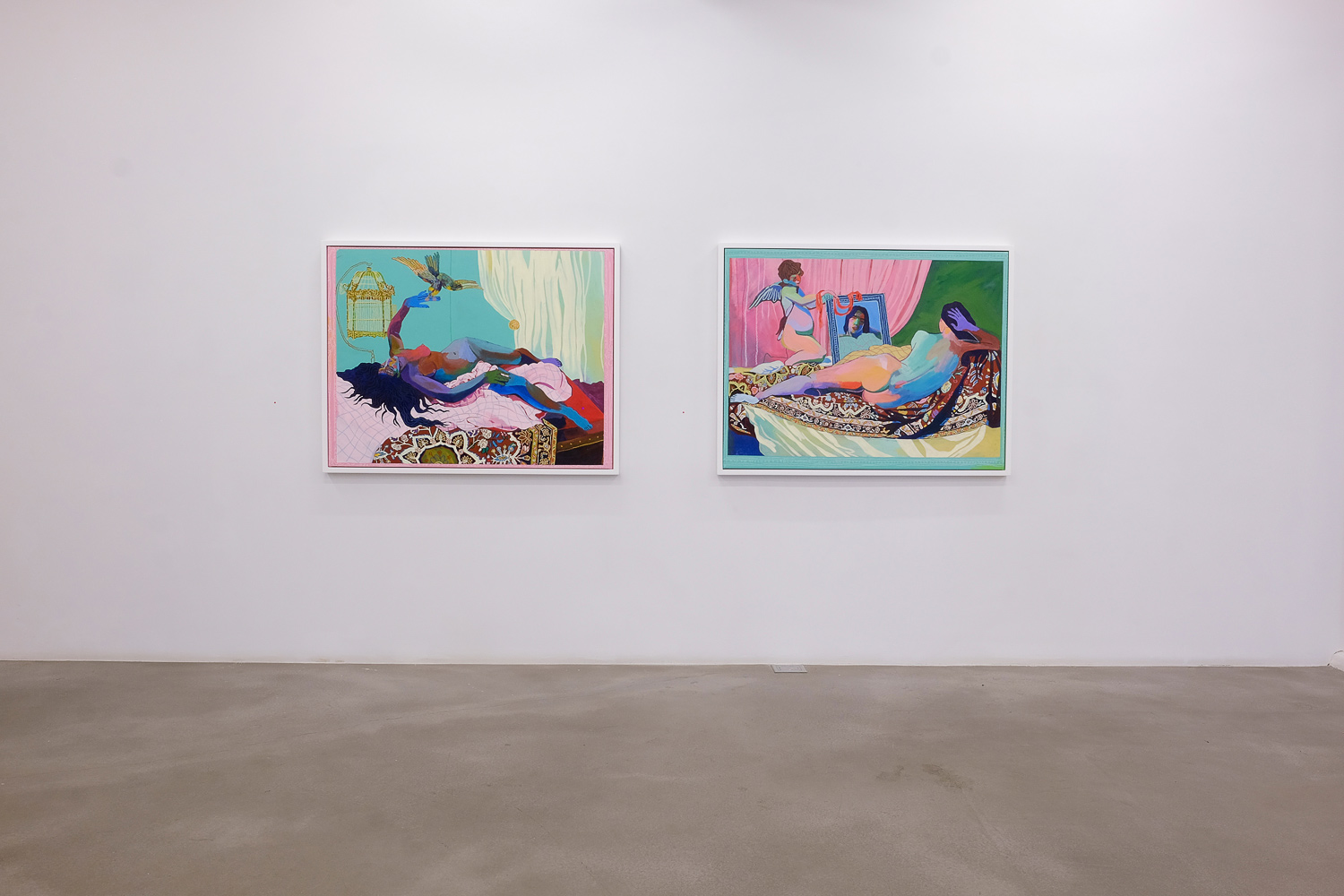
— Expensive Things, Winsor, Vancouver, 2016

Pink Dinner, 78" X 103”, 2016
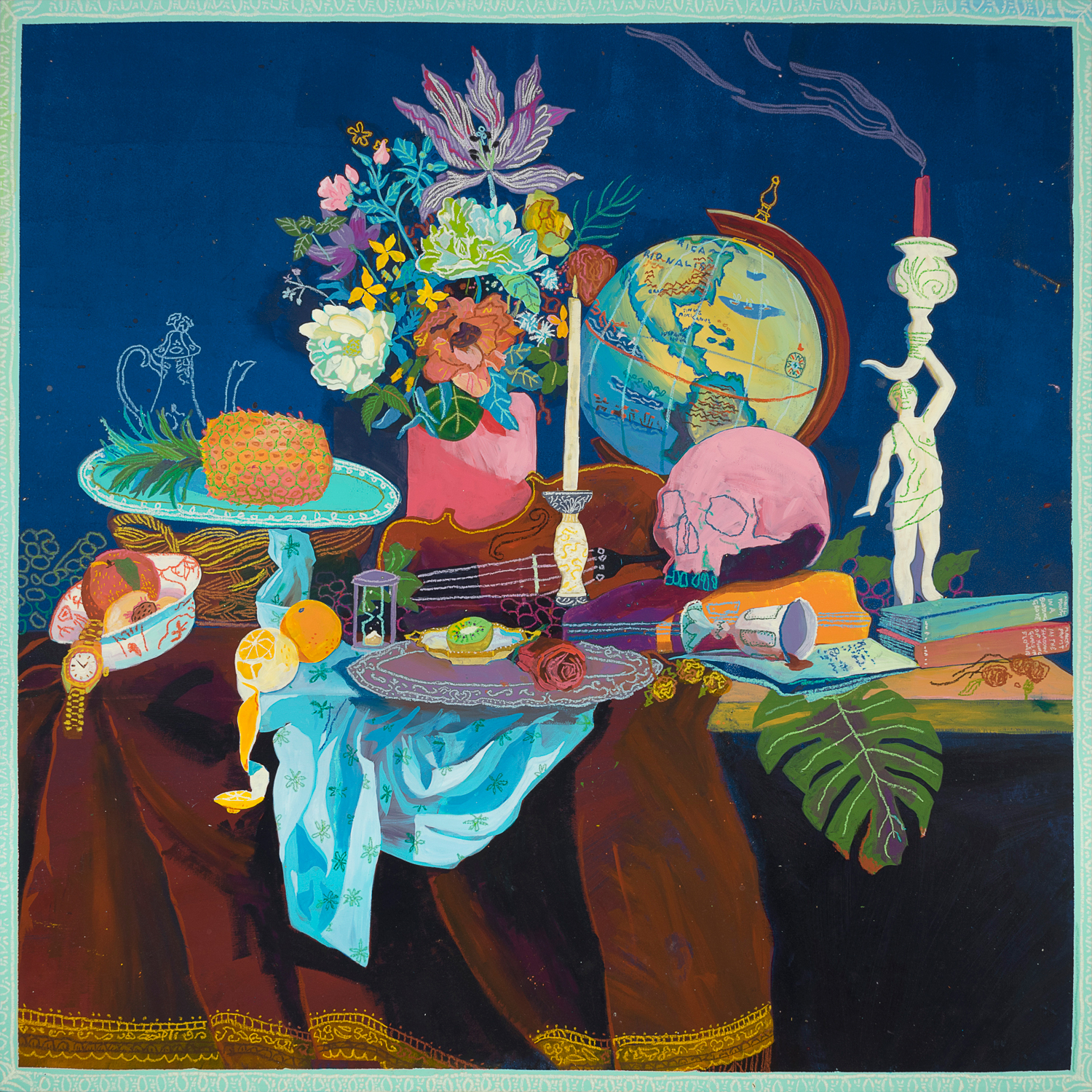
Expensive Painting (Vanitas), 64" X 64", 2016
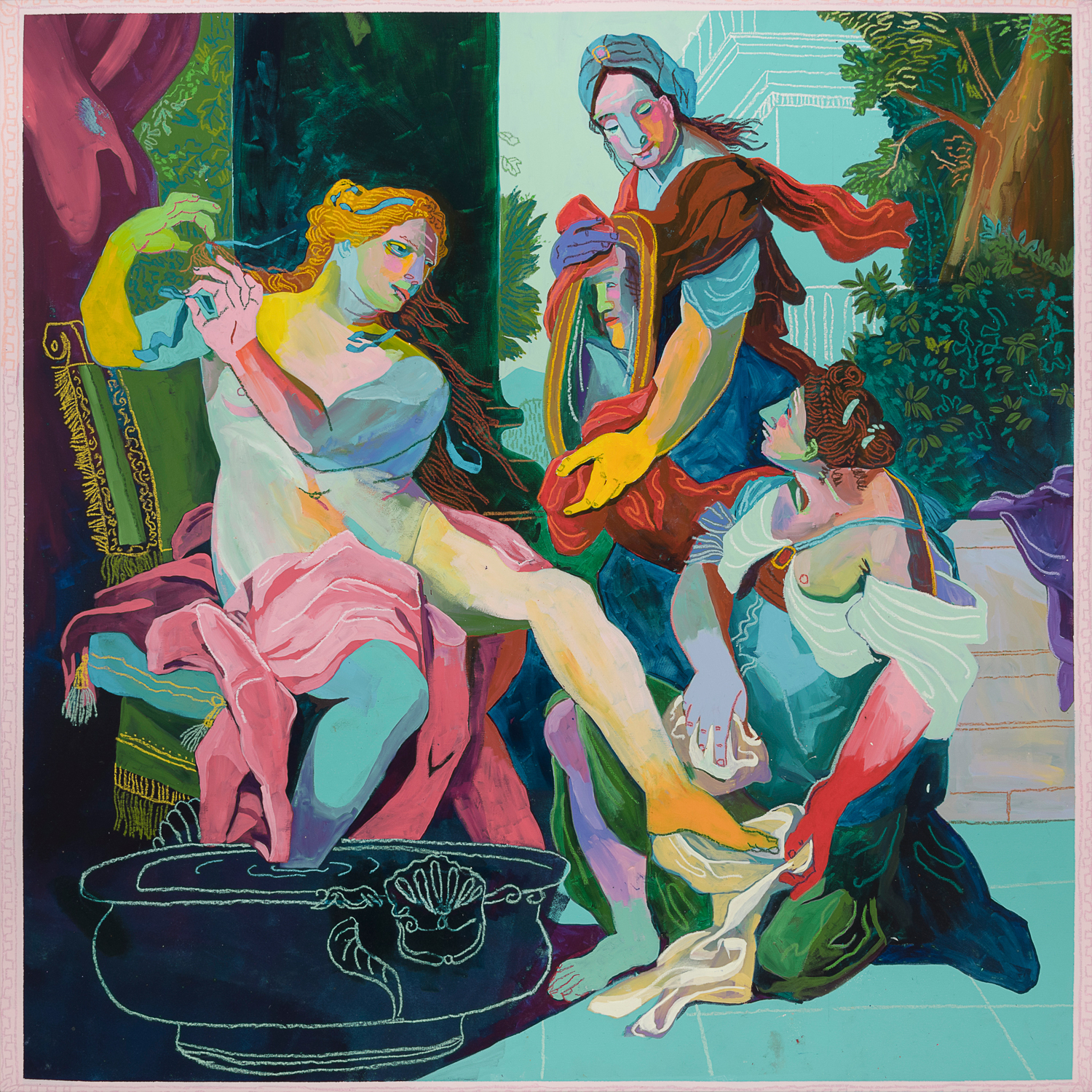
Expensive Painting (Bathsheba), 64" X 64", 2016
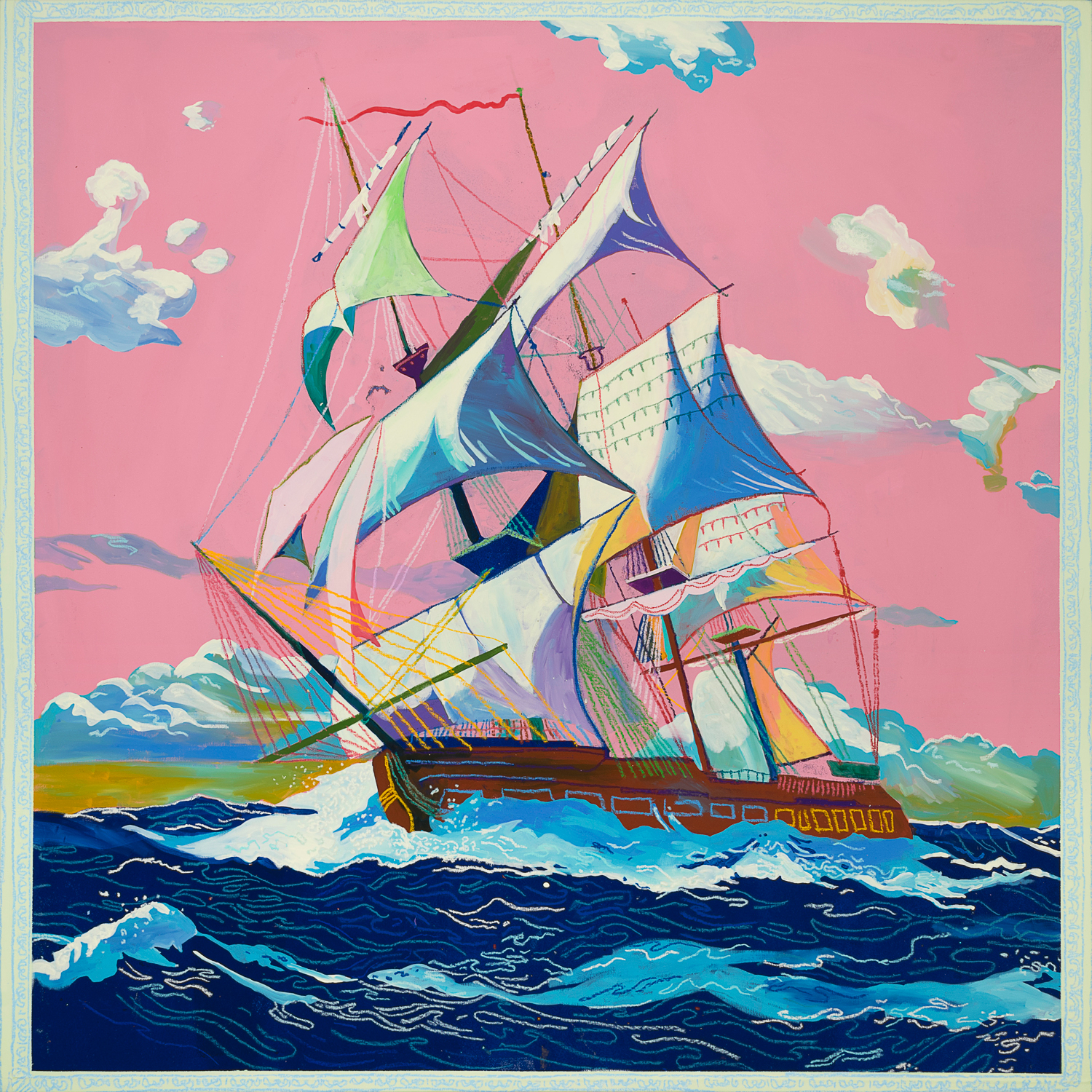
Expensive Painting (Ship), 64" X 64", 2016
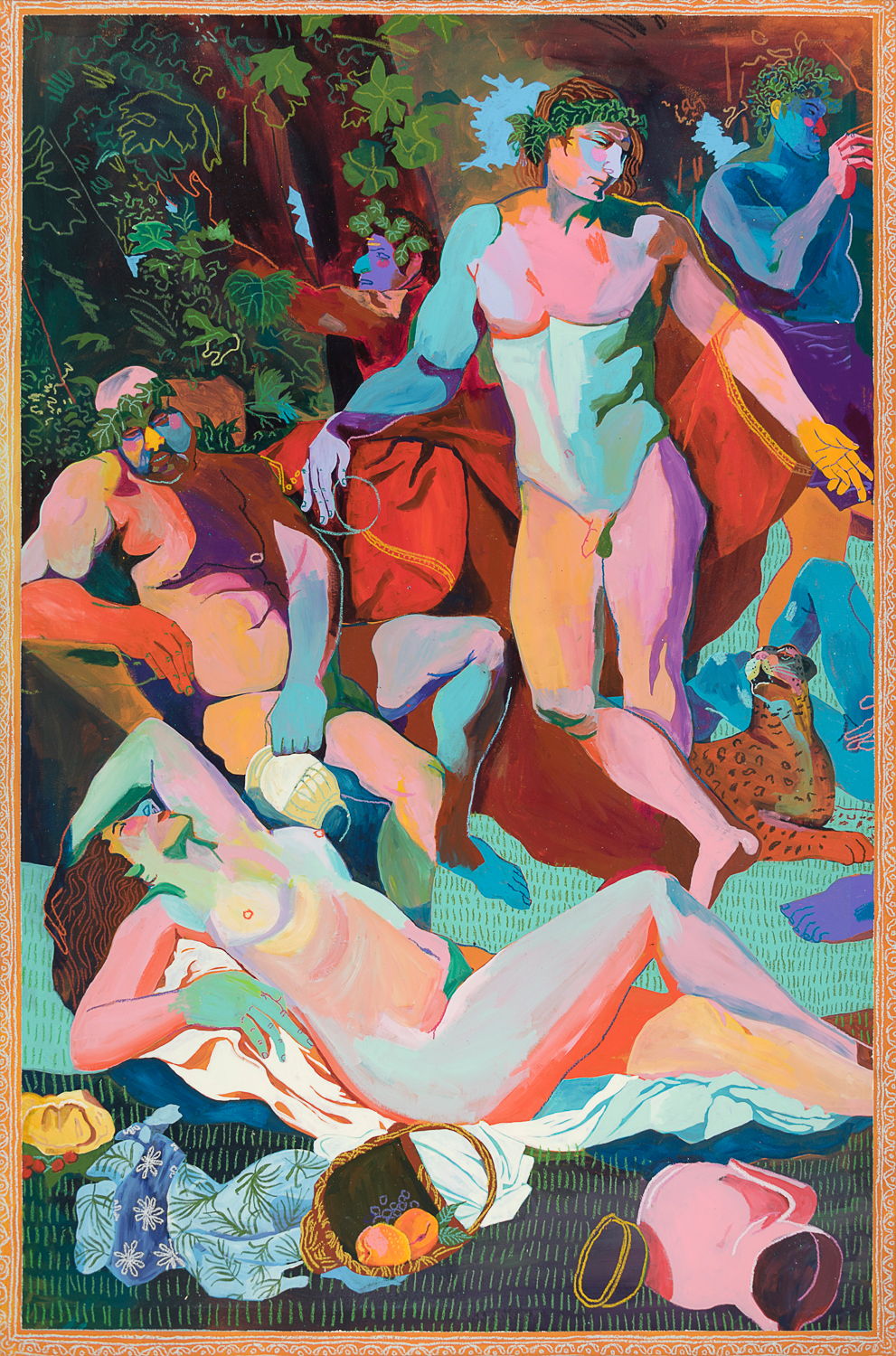
Expensive Painting (Bacchus), 83" X 55", 2016

Expensive Painting (Nude 1), 40" X 52", 2016

Expensive Painting (Nude 2), 40" X 52", 2016

Monumental Sèvres Porcelain Vases (Self Portrait), 37" X 50", 2016

Five Expensive Statues, 2016
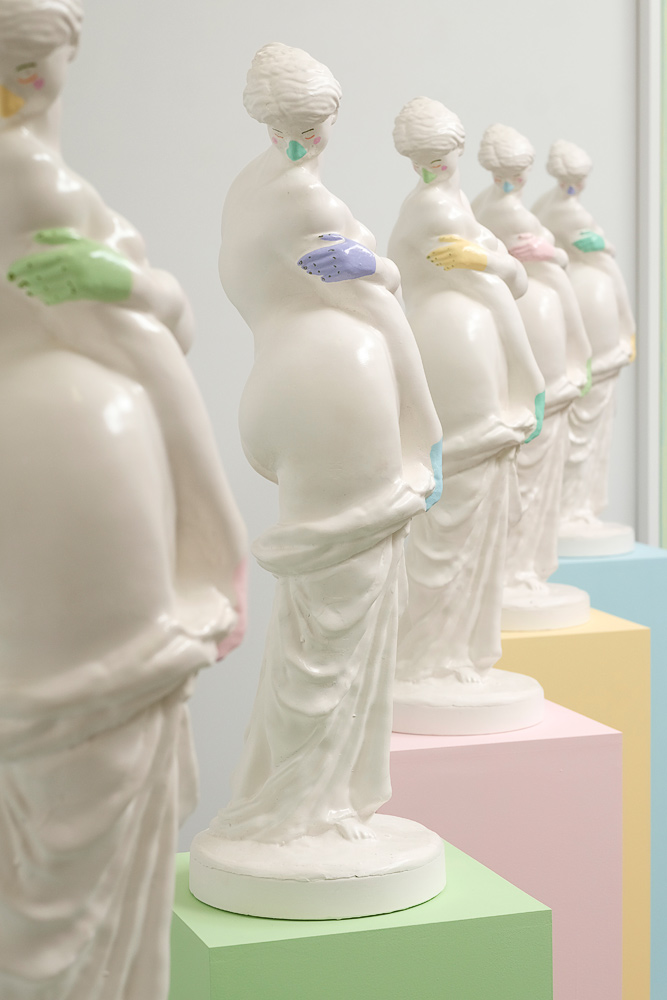
Each reference-rich painting by Andy Dixon presents a tantalizing opportunity to launch into an art historical rolodex. Informed viewers lick their lips in anticipation, yearning for their chance to vocalize an observation of a most blatant Matisse nod, a chance to explain to a neighbour the meaning of “memento mori”, or perhaps the biblical origins of Bathsheba.
As each work is dissected, each referential gesture is revealed, it becomes clear there is no simple translation of Dixon’s chosen symbology. Stepping back to observe Dixon’s work—irreverently swathed in a palette of pink, yellow, green and blue—observers are confronted with a banal economy of iconography. Instead, each work contains a hollow caché of individual meaning, the gesture of replication rather than what is depicted on the canvas becomes Dixon’s subject matter. Whether a Grecco-Roman scene of erotic pampering or a ship bereft of time and place, Dixon’s characters are stripped of their original iconography, having been slowly distilled through the centuries, until only a singular message now remains: luxury.
Dixon’s work descends from a lineage of (self)-referential modern art. Marcel Duchamp’s Boîte-en-Valise contains a miniaturized sampling of art, pulled from both museums of the old world as well as his own work. Among the artifacts included is a postcard-sized replication of Leonardo da Vinci’s Mona Lisa as well as a miniaturized version of Duchamp’s own Fountain. The effect of Boîte is two-fold; a representation of the studied, bite-sized history of art is conveniently packed to go, mimicking the easy commercialization of art regardless of its place within the canon. The art is inseparable from the mode of consumption, teetering at the still uncomfortable intersection of art and commerce.
As Duchamp chose his subjects “based on a reaction of visual indifference, with at the same time a total absence of good or bad taste….” Dixon’s own “visual indifference” is built on a collective conscience of fine-art imagery. A nude or a still life is rendered as obvious and mundane as the tangible objects enlisted in Duchamp’s ready-mades.
In recent works Dixon has painted opulent frames around his scenes, a tactic deft in its naiveté. Each painting is presented not as an opus but a single object of luxury. The artist’s unaffected collections of tropes are de-commodified, only to be re-commodified. It’s a cyclical process churned though again when Dixon places his own work on the walls of Expensive Things.
Hanging within the space of the gallery, Dixon’s objects enter another stage of the cycle. No longer an insular conversation each item has made the successful leap to its home of commodification, finally gaining the splendor Dixon had promised. Placed on a wall, flanked by its contemporaries of past and present, the sly punchline is finally delivered—they’re expensive things.